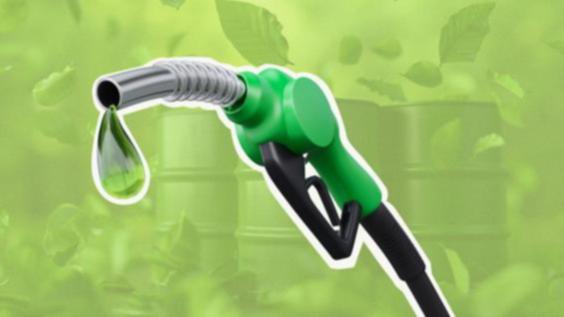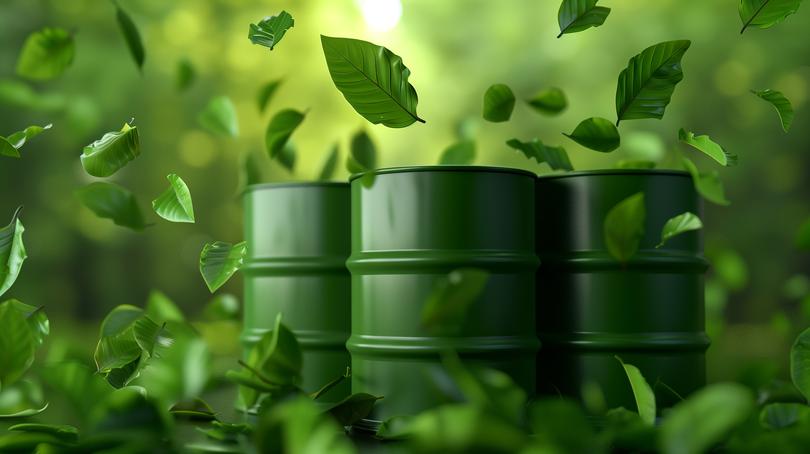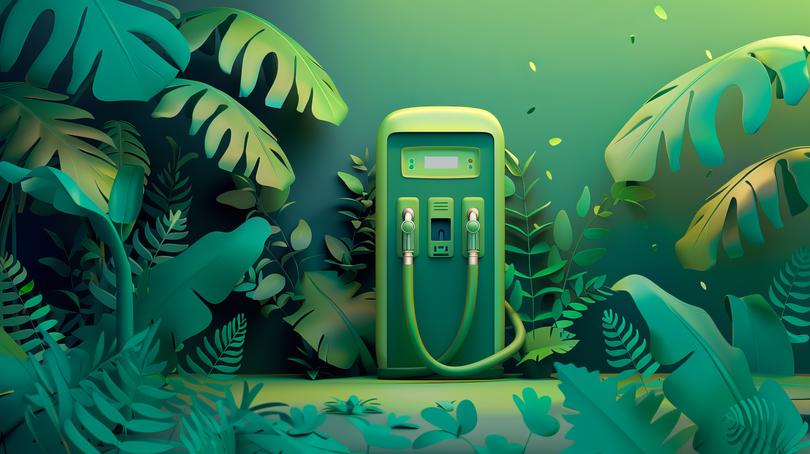THE ECONOMIST: Aramco has rivals over a barrel as it implements decarbonisation in race to climate targets

The managers of Saudi Aramco could have the cushiest jobs in the energy business.
The state-run oil colossus produces 9m barrels of oil a day, more than any other firm and nearly a tenth of the world’s total. It boasts by far the largest remaining proven reserves of the stuff, which would last into the second half of the century at current pumping rates.
Its piddling production costs of $3 a barrel, a tenth of what many Western private-sector rivals must content themselves with, allowed it to generate an eye-watering $282bn in total net profit over the past two years. And though its oil burns as dirtily as any other, Aramco emits less carbon liberating it from geological formations than competitors do.
Sign up to The Nightly's newsletters.
Get the first look at the digital newspaper, curated daily stories and breaking headlines delivered to your inbox.
By continuing you agree to our Terms and Privacy Policy.That makes the company’s product appealing in a world that is increasingly concerned about global warming but still hooked on hydrocarbons.
As less generously endowed rivals fall by the wayside, Aramco’s market share would, in other words, be almost certain to rise with a few modest investments in maintaining reservoirs. Yet the company’s employees are busier than ever. That is because Aramco is the linchpin of the strategy of Muhammad bin Salman, Saudi Arabia’s crown prince and de facto ruler, to end his country’s reliance on oil, diversify its economy and decarbonise its energy production.
Aramco is, for one thing, the chief source of funds for this vision. On June 2nd it launched a long-awaited secondary share offering, which hopes to raise $13bn in exchange for just 0.7% or so of its government-held stock. This follows on from a record-breaking $30bn initial public offering in 2019. Some of the money will again flow to the Public Investment Fund, the main vehicle for the kingdom’s sovereign wealth. Yet Aramco is more than just a princely piggy bank. As the kingdom’s most important business, it also has to transform itself in line with the royal strategy.
“Our goal is to make our energy source as affordable and sustainable as possible,” says Ahmad al-Khowaiter, Aramco’s head of technology and innovation.
Achieving that goal involves a three-pronged strategy.
Its first element is to double down on oil, but to extract it in ever cleaner ways. The company is planning to spend between $48bn and $58bn this year on capital investments. Wood Mackenzie, a consultancy, reckons it will spend more than $200bn on exploration and production between 2024 and 2030, far and away the most in the industry. At the same time, Mr al-Khowaiter stresses that his firm is determined to keep its own emissions in check. It routinely uses sophisticated modelling and clever drilling technology to minimise how much carbon is released in its operations. It has pledged to spew no net greenhouse gases by 2050, a decade ahead of Saudi Arabia’s national goal.
In particular, Aramco is cracking down on methane, the main ingredient of natural gas which is often produced alongside oil. Since 2012 it has flared less than 1% of this potent planet-cooking gas, compared with perhaps 4% that America’s shalemen tend to set alight. As a member of the Oil and Gas Climate Initiative, a group of large oil firms, it has vowed to reduce methane emissions to close to zero by 2030. At Abqaiq, the world’s largest oil-processing facility, Aramco staff show off drones being used to sniff out leaks of the gas, so they can be patched up. A recent analysis of satellite data by Kayrros, a French analytics firm, shows that methane intensity from Saudi oil and gas production last year was the second-lowest in the world, behind only greener-than-thou Norway.
The second pillar of Aramco’s strategy involves broadening its hydrocarbon portfolio to reduce its exposure to oil, which has historically dominated its production and exports. This pivot gained sudden momentum earlier in the year when the government ordered Aramco to stop work on expanding its maximum oil-production capacity by 1m barrels per day, from 12m-13m. With the global market well supplied and the country sitting on a lot of spare capacity, the expansion made little sense. And the $40bn or so of capital spending that it would have consumed between 2024 and 2028 can be put to use elsewhere.
One area of diversification is natural gas. Because it burns more cleanly than oil or coal, and because the resulting CO2 emissions are more concentrated and thus easier to capture and store, it is considered by many governments as a realistic bridge to a greener energy future. Aramco wants to produce 165bn cubic metres of gas a year by 2030, up from 110bn in 2022.

Some of that could replace oil in domestic electricity generation, releasing the saved crude for export. Aramco also plans to export liquefied natural gas (lng). Last year it invested $500m in MidOcean Energy, an American firm involved in LNG projects in Australia. Goldman Sachs, a bank, predicts that Saudi Arabia will pour between $83bn and $91bn into gas-related investments by 2030. In April news surfaced that it will spend nearly $8bn expanding its Fadhili gas-processing plant.
Petrochemicals, another big area of interest for Aramco, could soak up a further $100bn in Saudi investments this decade. The company plans to direct 1m barrels of its oil into making such products. sabic, a Saudi petrochemical company in which Aramco has a 70% stake, is working with two industrial giants, basf and Linde, on technology that converts oil into chemicals using electricity rather than natural gas to heat the process. A full-scale pilot plant was inaugurated in Germany in April.
Turning brown desert into green oasis
This points to the third pillar of Aramco’s master plan—decarbonisation. Aramco has turned itself into one of the biggest green investors in the energy world (see chart 2). A tenth of its capital spending, equivalent to $4bn-5bn a year, and a sixth of its research-and-development budget, or another $540m, are earmarked for non-hydrocarbon investments. Last year a fifth of the roughly 1,000 patents Aramco secured in America related to decarbonisation and digital technologies, up from a seventh in 2022. The company is also planning to channel $2bn of its $4bn in new venture-capital wagers. During a visit to Saudi Arabia in May by Jennifer Granholm, America’s energy secretary, Aramco signed agreements with several American green startups.
The most mature of the green technologies in the company’s sights is renewable power. Rystad Energy, a research firm, estimates that the company will develop 12 gigawatts (gw) in wind and solar generation capacity by 2030, up from virtually nothing a few years ago. Prince Muhammad has ordained that half the country’s currently filthy power-generation mix must be clean by 2030.
Thanks to the scorching desert sun and, in places, fierce night winds, Saudi renewables projects enjoy among the lowest costs in the world. One of the startups that tagged along with Ms Granholm was Rondo, which is developing batteries that store renewable energy as heat.
Some of this clean power can be used to produce equally clean hydrogen, which could replace hydrocarbons both as a store of energy and in some industrial processes such as steelmaking. In addition to such “green” hydrogen, made by splitting water into hydrogen and oxygen using ample amounts of renewable energy, Aramco wants to become the world leader in “blue” hydrogen, which is derived from natural gas but in a process that prevents the resulting carbon from reaching the atmosphere.
As part of this effort, the company is working with Topsoe, a Danish engineering firm, on ways to reduce such emissions. It has already shipped small quantities of blue ammonia, a gas from which hydrogen can be easily derived but which is less fiddly to transport, to customers in Asia.
These were the first-ever such commercial shipments to be independently certified as low-carbon. Aramco plans to be making 11m tonnes of blue ammonia per year by 2030, roughly a fifth of what the International Energy Agency, an official forecaster, expects to be the global market for the stuff.
Hydrogen can also be used to produce synthetic liquid fuels that would do the same job—and use the same infrastructure—as petrol, diesel and aviation fuel, minus the carbon emissions. Aramco is planning to invest hundreds of millions of dollars in partnership with Repsol, a Spanish oil company, to produce such “drop-in” e-fuels. As a proof of concept, Mr al-Khowaiter points to Formula 1 motor racing. Starting in 2026 the teams, including Aramco’s partnership with Aston Martin, a British sports car maker, will have to use 100% sustainable fuels.
All of Aramco’s blue-hydrogen plans rely on its ability to capture the carbon emitted in its production. As its collaboration with Topsoe and its shipments of blue ammonia to Asia show, it is having some success in this area. But its carbon-capture plans are much grander, and go far beyond hydrogen production.

Many of Saudi Arabia’s sources of industrial carbon emissions, be they oilfields or petrochemical plants, are conveniently located near rock formations where the captured emissions can be stored. Aramco is working with Linde and slb, an American oil services firm, to build a vast hub in Jubail, an eastern city.
This could capture around 6m tonnes a year of Aramco’s own emissions, and another 3m from industrial customers, and either sequester them underground or turn them into useful products such as fertiliser (into which Sabic has been turning carbon at one of its chemical plants since 2015). The company’s long-term ambition is to capture 44m tonnes of CO2 a year, equivalent to about 7% of Saudi emissions today. It looks likely, experts reckon, to reach its initial goal of 6m tonnes from 2026.
Most ambitiously of all, the company is working with companies like Siemens, a German engineering giant, and Spiritus, another of Ms Granholm’s startup travel companions, on “direct air capture” equipment, which can offset emissions elsewhere in Aramco’s operations, by scrubbing carbon dioxide directly from the atmosphere rather than from industrial point sources—or, eventually, from burning of its oil by motorists or other end users.
None of these green bets is a guaranteed winner. Meeting the royal target of 50% clean electricity generation looks like a stretch given that the figure today is 3%.
Blue ammonia, which costs the equivalent of $250 per barrel of oil, three times the current price of crude, remains too expensive to persuade buyers to sign long-term contracts. Synthetic fuels could likewise prove a costly and energy-intensive dead-end that serves only to slow the electrification of transport. As for snatching carbon from industrial flues, let alone from the atmosphere, despite years of efforts the technology remains pricey, untested at scale and controversial among environmentalists, many of whom see it as a pretext for not cutting emissions in the first place.
Many of Aramco’s decarbonisation plans are indeed designed to keep the world using its products, says Christyan Malek of JPMorgan Chase, a bank.
But, he adds, it also involves making those products “as green as possible”. Helima Croft of RBC Capital Markets, an investment firm, says that given the level of Aramco’s non-oil investments, the Saudi strategy cannot simply be dismissed as “window dressing”.
Such assurances will not persuade die-hard environmental campaigners to embrace what they view as one of the world’s chief climate villains. For climate realists, the oil giant’s efforts can be seen as a real step in the right direction.
